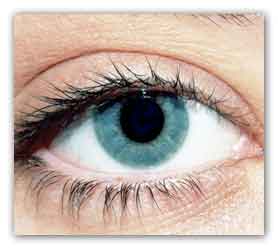|
Half the world's population (nearly 5 billion) will
be short-sighted (myopic) by 2050, with up to
one-fifth of them (1 billion) at a significantly
increased risk of blindness if current trends
continue, says a study published in the journal
Ophthalmology.

-
5
billion to be short-sighted (myopic) by the year
2050
-
One in ten at risk of blindness
-
Myopia to become a leading cause of permanent
blindness worldwide.
U.S. and Canada - 260 million myopes by 2050, up
from 90 million in 2000; 66 million high myopes
by 2050, up from 11 million in 2000.
-
Parents advised to have children's eyes checked
regularly, improve time outdoors and moderate
time on near based activities including
electronic devices.
The
number with vision loss from high myopia is expected
to increase seven-fold from 2000 to 2050, with
myopia to become a leading cause of permanent
blindness worldwide.
The
rapid increase in the prevalence of myopia globally
is attributed to, "environmental factors (nurture),
principally lifestyle changes resulting from a
combination of decreased time outdoors and increased
near work activities, among other factors," say the
authors from Brien Holden Vision Institute,
University of New South Wales Australia and
Singapore Eye Research Institute.
The
findings point to a major public health problem,
with the authors suggesting that planning for
comprehensive eye care services are needed to manage
the rapid increase in high myopes (a five-fold
increase from 2000), along with the development of
treatments to control the progression of myopia and
prevent people from becoming highly myopic.
"We
also need to ensure our children receive a regular
eye examination from an optometrist or
ophthalmologist, preferably each year, so that
preventative strategies can be employed if they are
at risk," said co-author Professor Kovin Naidoo, CEO
of Brien Holden Vision Institute. "These strategies
may include increased time outdoors and reduced time
spent on near based activities including electronic
devices that require constant focussing up close.
"Furthermore there are other options such as
specially designed spectacle lenses and contact
lenses or drug interventions but increased
investment in research is needed to improve the
efficacy and access of such interventions."
What is myopia?
Myopia, also known as 'short-sightedness' or
'near-sightedness', causes people to have difficulty
seeing distant objects clearly. It's estimated that
there are currently 2 billion myopic people in the
world, a figure that is growing rapidly.
The
myopic eye is stronger than the non-myopic eye
(often because the eye is longer). This means that
instead of focusing on the back of the eye (the
retina), light focuses in front of it, causing
blurred vision.
Myopia can be corrected by spectacles, contact
lenses and refractive surgery.
Myopia usually begins in childhood at school age
(six years and onwards) and can worsen until early
adult years. This is referred to as youth-onset or
juvenile-onset myopia. It can also occur in adults
(ages 20 to 40) with no prior history of problems in
childhood, termed early adult-onset myopia. One can
also be born with high levels of myopia (congenital
myopia)
Myopia affects about 1 in 4 people in Australia, 1
in 3 in America and 1 in 2 in some Asian countries.
In 2010, it affected more than a quarter of the
world’s population.
The incidence of myopia has been rapidly increasing
across the world. By 2020, it is estimated that the
number of people with myopia will grow to one third
of the world’s population (2.6 billion) and by 2050
there will be 4.8 billion myopes (around half the
world's population).
The causes of myopia are both genetic and
environmental. It is suggested that increased
urbanisation and close-range activities e.g. reading
and computer work, are increasing the incidence of
myopia.
Growing levels of high myopia are increasing the
risks of serious eye conditions, such as myopic
macular degeneration, cataract, glaucoma and retinal
detachment, many of which may lead to permanent
blindness.
It is predicted that by 2050 there will be almost 1
billion high myopes globally.
For
more information
Ophthalmology
Global Prevalence of Myopia and High Myopia and
Temporal Trends from 2000 through 2050
Link...
Brien
Holden Vision Institute
Link...
MDN |